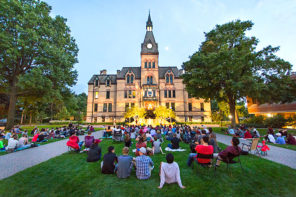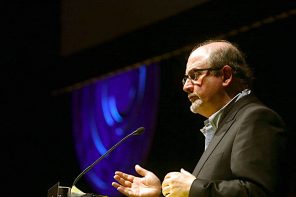The United Arab Emirates, or UAE, is the only functioning federation in the Arab world, composed of six states that joined together in 1971 and a seventh that decided to come along a year later. The two primary emirates are Abu Dhabi, the capital and wealthiest of the seven, whose territory is 87% of the whole country’s, and Dubai. Dubai is the second of the two, but easily the more famous. In the past fifteen years, the city has grown from a small trading port to a world-class, global city, one of the most dynamic and diverse metropolises in the world.
While we make much of the rise of China and Turkey, for example, consider that these are societies with long histories, including great stretches as dominant regional or global powers. Dubai, on the other hand, has come up from out of nowhere and accelerated past much of the Middle East. Of course the city is frequently derided for being shallow, superficial, overly concerned with wealth, and interested only in the material. In many ways, it reminds the historically-minded of how America was derided in the 19th and early 20th centuries. (There’s good and bad there, as any new capitalist conglomeration would feature.)
Dubai is the biggest city in the UAE, with 2.1 million people. Recently I heard that some 13,000 people move to the city each month, which can be best described as clumps of skyscrapers along massive highways, some 6-8 lanes in each direction. But though it’s called the United Arab Emirates, the population is overwhelmingly South Asian, especially in Dubai—they form the service and labor class, but many South Asians are wealthy professionals and businesspersons. Dubai and the UAE have historically been more a part of the Indian Ocean economy than the Arab world, which is barely a coherent economic concept (countries like Turkey belong as much to Eastern Europe as the Middle East; the Gulf more to India and East Asia than to Arab and Berber North Africa).
On a recent trip through the region, via Istanbul, I took some pictures to capture some of the spirit of the place for lack of a better term. When you bring that many people together, chasing after money and the chance to strike it big—again, think American Wild West, for better and worse—you get… things that surprise you.
Or, at the least, things you do not expect.
• • • • • • • •

⬆
Before praying, Muslims perform a ritual ablution known as wudu’, which includes washing your feet. In many Western countries, this means the awkward moment when your colleagues find you barely balanced on one leg with your opposite foot drowning in the sink and your arms and hair sopping wet. Usually the encounter is so unexpected that no words are exchanged, just brief, pregnant glances, moments never to be spoken of again.
If your colleagues are particularly unlucky, they’ll just come in after you’re done and slip and crack something open on the watery mess you’ve made. But in Muslim-majority countries (the above is from Ataturk International in Istanbul), special ablution facilities are the norm. But of course not everyone knows of them or, and this is more likely, why go all the way to the airport mosque when there’s a perfectly good sink to stick your foot in?

⬆
Inside a Dubai hotel room. This speaks for itself.


⬆
This massive structure is not from the live-action version of Disney’s Aladdin, though you might be forgiven for thinking so. The UAE exists on a massive scale, which isn’t a challenge when you have that much money. This is the Shaykh Zayed Grand Mosque, the largest in the country and one of the largest in the world. It was built to honor the George Washington of the UAE, Shaykh Zayed, first independent ruler of Abu Dhabi, capital city and Emirate.
Each night, the mosque is illuminated according to the corresponding phases of the moon, so one night it may only be dimly lit (the new moon); or fully flooded with light (for the full moon). Returning to my point, namely that the UAE is a more Indian Ocean-oriented, and South Asian, society than a stereotypically Arab one, this mosque clearly continues in the vein of Mughal and Indo-Islamic architecture and owes far less to traditionally Arab-Islamic architecture. Compare to the Taj Mahal, and Badshahi and Jama’ Mosques of South Asia (India and Pakistan.)
Another argument for Shah Rukh Khan as Caliph.

⬆
The world’s tallest building, the Burj Khalifa (Khalifa Tower), anchors the misleadingly-named ‘Old Town’ of Dubai, which is a new development made to look like a traditional Arab neighborhood. That is next to the world’s largest mall, though second largest by leased area: the Dubai Mall, which is a great place to get lost and start crying out of desperation in one of the many prayer areas interspersed throughout. The government plans a massive mosque to complement the neighborhood, ready to fit 15,000 folks.
Their wet feet will be visible from space.
Based on an Islamicate floor plan, the Burj Khalifa is one of the few modern skyscrapers that are genuinely beautiful. Its delicacy belies its height: twice the Empire State Building, or roughly 2,800 feet, with 160+ floors; I’ve heard the topmost floor is a private mosque, and thus the tallest in the world (you could say it sits on top of its own minaret). At night, the Burj is lit up with blinking lights, which give it an even more translucent aspect, directing us away from its massiveness—which, and I do not know if this is intentional or not, echoes other Islamicate structures of the past—and conveying softness.
There’s a new Donald Trump development in Chicago which appears to copy the style of the Burj Khalifa, but appears to be the worst architectural xerox copy job in history—the same firm built both buildings, starting right around the same time. Talk about luxury on the cheap; it’s hard to deny a feeling of similarity. (The tower is to the Burj as a certain toupee is to hair: might the Trump Tower inadvertently mimic an Islamic motif?)
The regal twin palm trees in the foreground are the world’s tallest, at some 3,500 feet each. Recently a falling coconut crushed an entire apartment complex, punching a massive hole that has filled up with the rare rainshower. Hordes of Muslims can be found sticking their feet in and then dying of heatstroke on the walk to the nearest mosque.

⬆
Apparently there aren’t enough real men in the world.

⬆
Because, of course, if you’re in Dubai, you’re here to shop. Or you, as per typical American geographic know-how, meant to fly to Duluth and arrived somewhere else entirely. Considering how unaffordable Dubai is for folks like me, you’d need a credit card. But, of course, you have to know your audience. This oversize sample inadvertently gives away the credit card number of some eight-five million men, most of whom live in Egypt.

⬆
Earlier on this day, I saw a South Asian gentleman crossing an eight-lane highway while drinking a cup of tea out of a white ceramic mug. He took his time, pausing between lanes to let cars whiz by (at roughly 70 miles per hour) and took measured sips to pass the time, enjoying his hot and fresh caffeinated beverage, which no South Asian can survive without. I salute you, Ahmed Mohammed, or whatever the hell your name is, for your bravery, indifference, and equally your fidelity to our heritage.
This concept is known as tawakkul in Islam—reliance and trust in God—and explains why people take risks people in the West would never even contemplate. Because, after all, you’re only going to get flattened by an accelerating Porsche Panamera, the family car of choice here, if God wants you to, and what better way to meet your maker than relaxed after some Lipton Yellow Label?
But because I couldn’t snap a picture of this mythic hero, I offer you the next best thing: Something that likewise makes no sense, and makes you stop and scratch your head. Get filthy rich in Rising Asia, as Mohsin Hamid put it.




